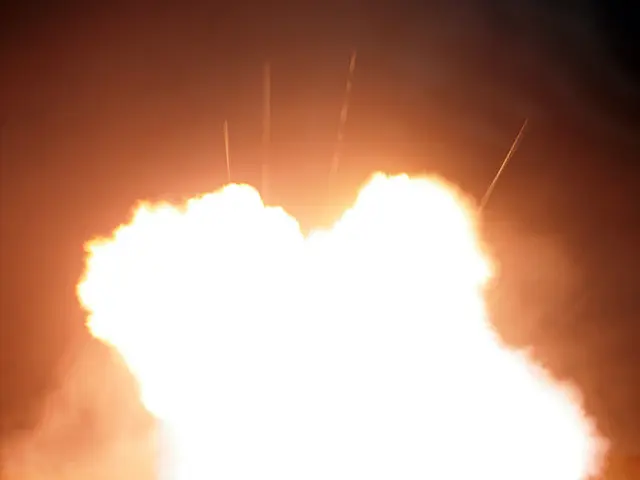Escalating hostilities: Israel and Iran engage in a third day of military exchanges, following the suspension of nuclear negotiations.
Amidst the smoky aftermath, Israel's first responders brave the debris of a residential building hit by a missile, presumably launched from Iran, near Tel Aviv, Israel, on June 15. [AP/YONHAP]
Adding Perspective
The flame-tinged skies of Tehran, following alleged Israeli strikes, serve as a grim reminder of the long-standing tension between Israel and Iran, a conflict that found its genesis in the 1979 Iranian Revolution. Before this transformative event, the two nations shared close economic and security ties, with Iran being a significant oil supplier to Israel.
However, the revolution led by Ayatollah Khomeini marked a radical shift in Iran's foreign policy, ultimately leading to a severing of relations with Israel. Since the early 1990s, escalating tensions have been attributed to factors such as Iran's nuclear program, support for Islamist groups like Hezbollah and Hamas, and involvement in attacks against Israeli targets. This conflict has morphed into a proxy war, with both sides backing opposing factions in regional conflicts, such as Syria and Yemen.
The Present Struggle
As of June 15, 2025, the rivals find themselves in a heightened state of conflict. In recent years, direct military confrontations and cyberattacks have marked their interactions. In 2024, tensions peaked with missile strikes and assassinations, and in 2025, Israel executed strikes against Iranian nuclear and military targets following reports of Iran violating its nuclear obligations by the International Atomic Energy Agency (IAEA).
The recent volleys have included Israel's annihilation of Iranian drone and ballistic missile units, as well as air defense sites, reflecting an ongoing escalation in their conflict. Iran has leveled allegations against the U.S. of backing Israel in these actions, adding another layer of complexity to the already tense Middle Eastern dynamics. The situation continues to teeter on the precipice of instability, with both parties embroiled in a multi-dimensional conflict encompassing military actions, diplomatic disputes, and proxy warfare in the region. [1, 2, 3, 4]
In the meantime, Israeli rescue teams tirelessly scour the damaged residential area of Rehovot, central Israel, following Iranian ballistic missile strikes on June 15. [EPA/YONHAP] An Israeli military working dog joins the search for survivors amidst the rubble. [AP/YONHAP] The trembling anticipation hangs heavy in the air as the region teeters on the brink of further escalation.
- The escalating conflict between Israel and Iran, particularly evident on June 15, 2025, has extended beyond military actions, involving diplomatic disputes and proxy warfare, as well as international politics.
- Amidst the ongoing tension, both nations have also engaged in cyberattacks, reflecting a broader landscape of war-and-conflicts that encompasses not just conventional warfare, but also covert operations.
- General news outlets and international organizations, like the IAEA, play a pivotal role in reporting on these events, providing society with updates on the threats of war and negotiations for diplomatic resolution.
- Meanwhile, the travel industry grapples with the impact of these tensions on tourism and economic relations, as tension in the Middle East can have far-reaching consequences for global industry.







